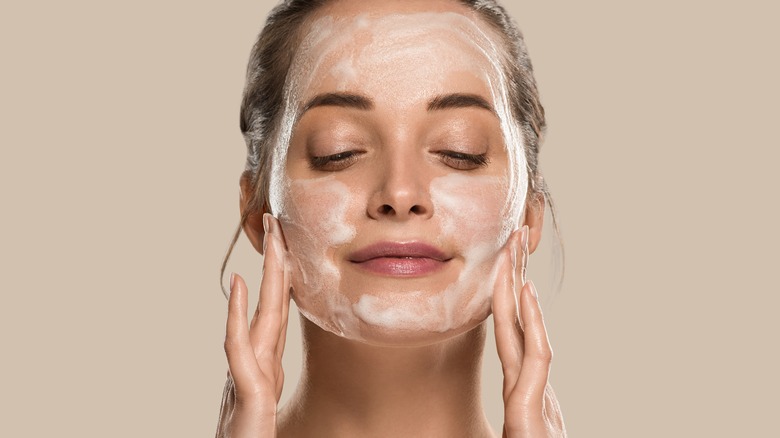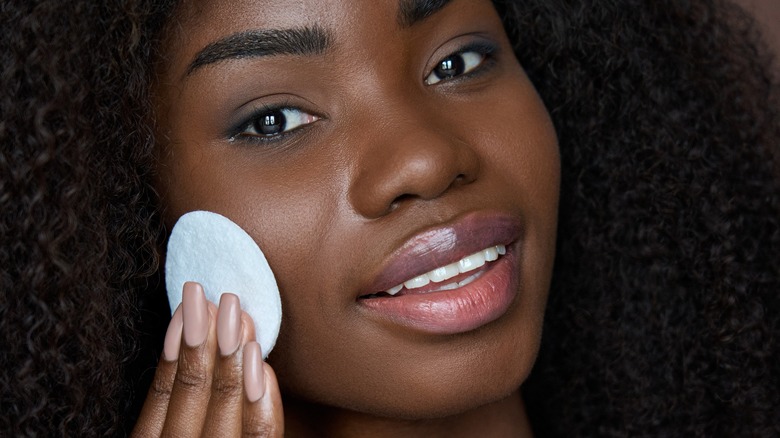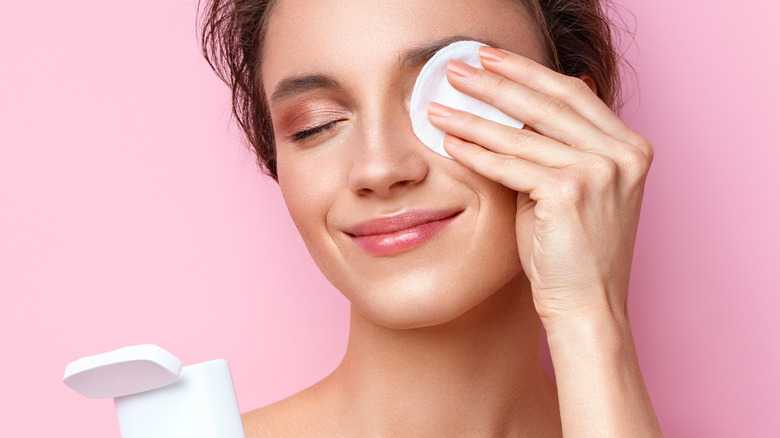Dry Washing May Be The Key To A Deep Face Cleanse
We're living in a time that is constantly bombarded with tips and hacks for almost everything. Everywhere we turn, it seems, there is always a newer, better product or method arriving on the scene and changing the world as we know it. Whether these trends are booms, busts, or buzzwords, they never fail to have us rethink our daily habits and wonder if this new fad is worth the hype. As with any experiment, the journey to wisdom is not without a bit of trial and error. If you feel up to the challenge, let's try out this hack that involves dry washing your face.
Yup! This concept can't be any more at odds with the conventional washing steps that the American Academy of Dermatology Association teaches us: Wet your face, apply cleanser, and rinse with lukewarm water. It's hard to imagine a face cleanse with limited wet elements, but as counter-intuitive as dry washing sounds, it's not completely nonsensical. Turns out, you don't always have to hunch over your bathroom sink for a face wash.
A dry face cleanse might be just what the doctor ordered for those with dry and sensitive skin. In fact, dermatologist Dr. Joshua Zeichner tells SheKnows: "Excessive water can paradoxically lead to skin dryness by stripping the skin of essential oils." Well, let's dive into the dermatologist-approved dry washing trend and see why it might be a good change from our usual face cleansing routine.
Benefits of dry washing your face
According to a tutorial posted by Art of Skincare on YouTube, here's how a scene of dry washing your face unfolds: Apply the cleanser of your choice to your dry hands, rub your hands together, and massage your face for about two minutes to stimulate your metabolism and lymphatic drainage. Then, wet your hands with a little water and repeat the massaging step to loosen up the dirt. Finally, rinse your skin in tepid water until all the cleanser is washed away. Slathering soapy cleanser on a dry face and rubbing it with dry hands is probably one of the most sticky and cringe-worthy experiences ever, but there is a method in this madness.
In fact, cleansing your face in this manner is "probably the best way" to remove oil, dirt, and gunk from your skin, dermatologist Dr. Morgan Rabach, M.D., tells Bustle. This is because the active ingredients in your cleanser are more concentrated, and thus stronger, when they are not diluted with water on your wet skin. Also speaking to the publication, dermatologist Dr. Ryan Turner, M.D., warns, "Some facial soaps that contain acids like salicylic acid and glycolic acid may be too drying or irritating if used without the buffer of water."
Dry washing is not for everyone
While dry washing boasts a substantial cleansing effect, it cannot replace the makeup removal step, says blogger Astha from Makeup and Beauty Forever. She advises that the correct order should be removing your makeup first and then dry washing your face to further cleanse product residue from your skin's surface.
Another thing to keep in mind is that this technique isn't for all skin types and cleansers. Dry washing can't work with a harsh cleanser, because harsh actives need to be diluted with water to minimize skin irritation. If you have sensitive skin or skin disorders of any sort and would like to try out this method, consult your dermatologist first. Alternatively, you can use micellar water as a rinse-free cleanser. Micellar water alone suffices to cleanse your face of dirt, oil, and makeup, and doesn't need to be rinsed off with regular water. "Micellar waters are super-gentle, so they won't strip or irritate the skin while cleansing," dermatologist Debra Luftman, M.D., tells Byrdie. Micellar water is also suitable for all skin types.


